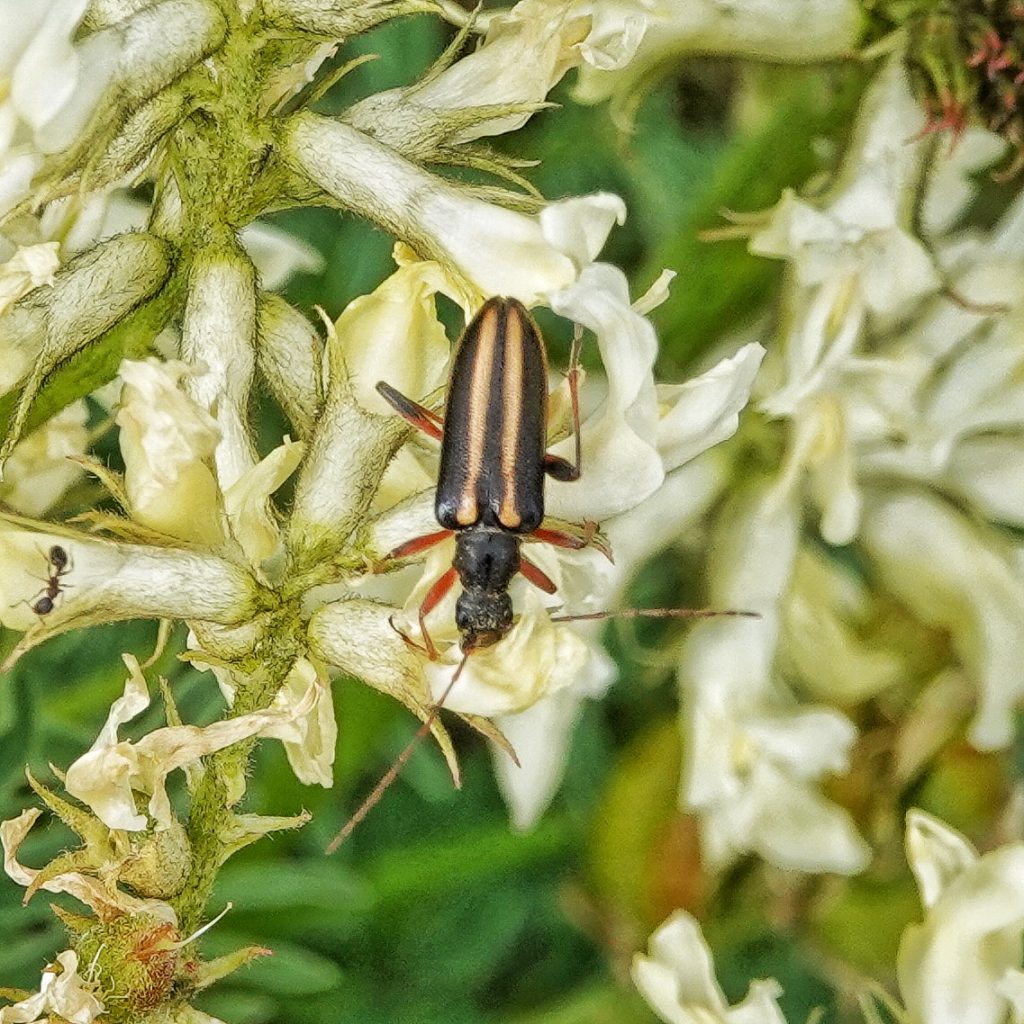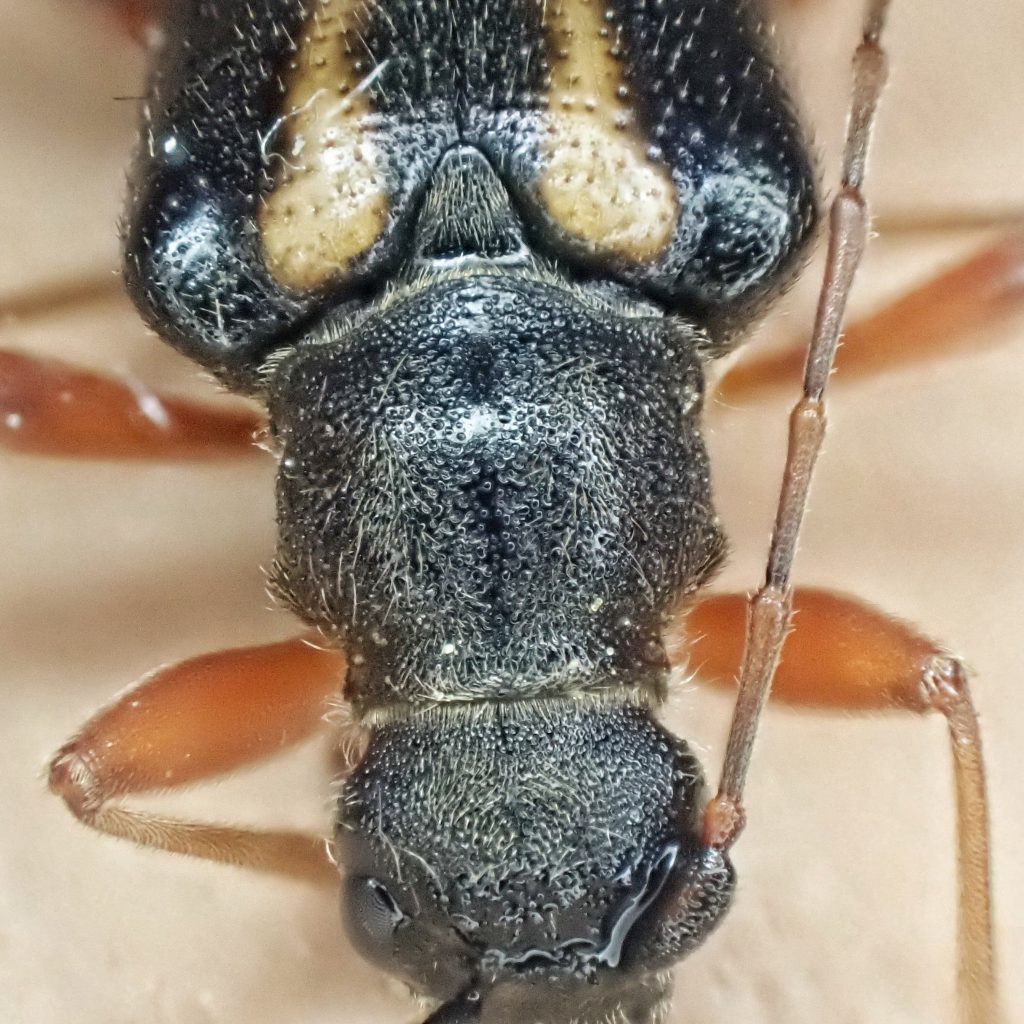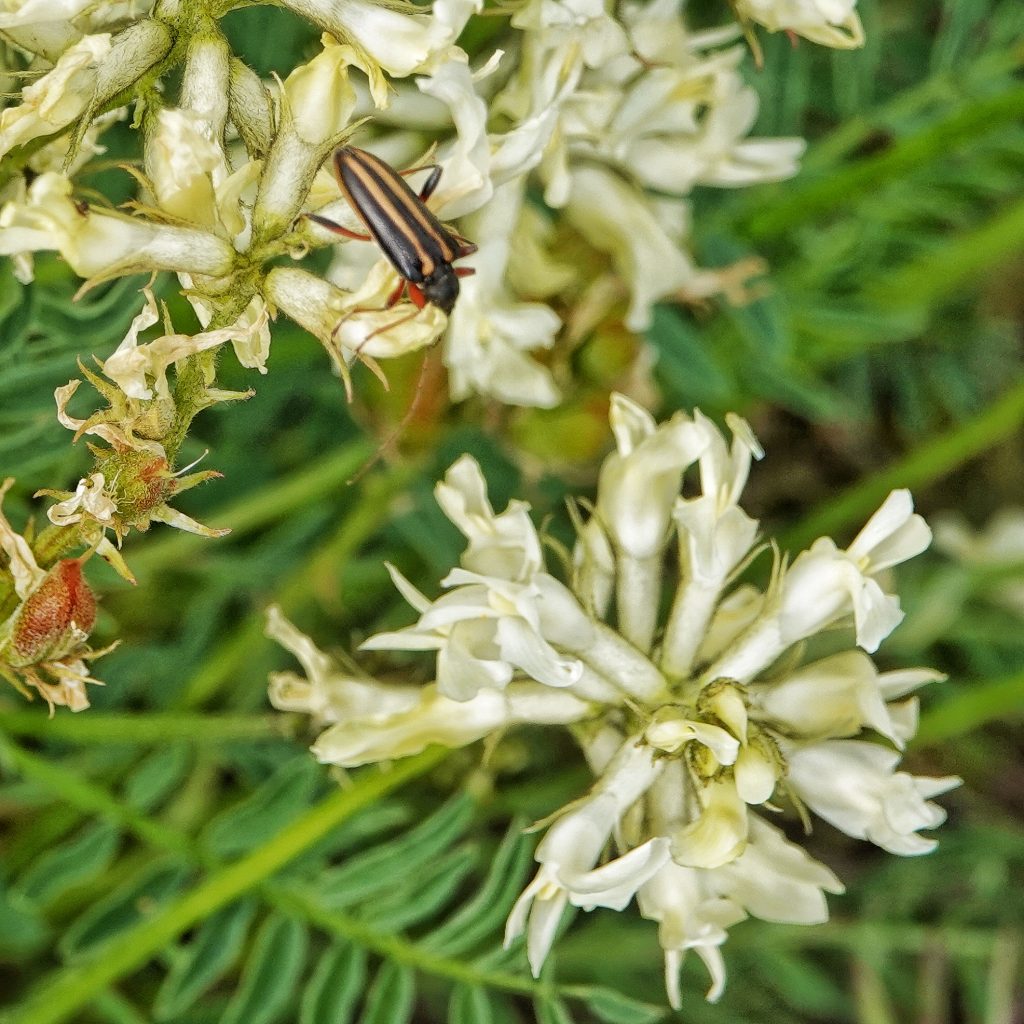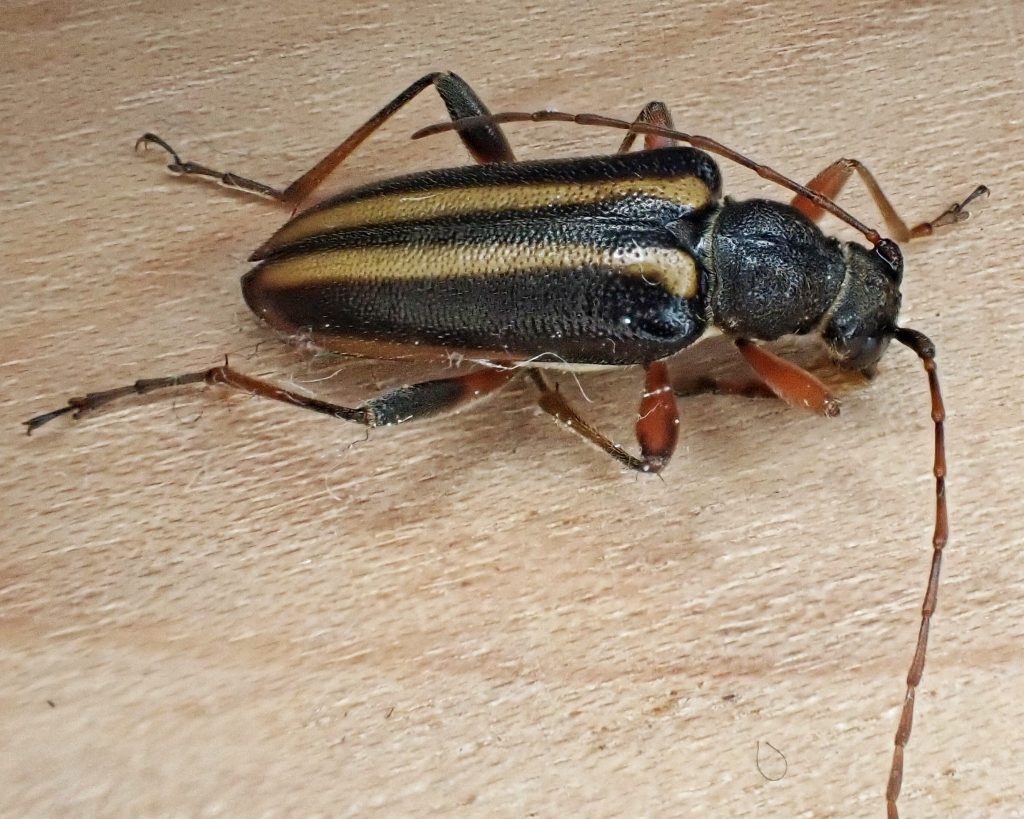
There are two types of profiles that take awhile to write. Species where there is an abundance of information about them require a lot of reading and summarizing, which is time consuming but can be very interesting. But species like Cortodera longicornis (which are flower longhorn beetles [subfamily Lepturinae] in the tribe Rhagiini), where there is a real dearth of information, are time consuming, frustrating, and tedious. I keep telling myself to stop searching, that I’ve found what there is to find, but it’s very hard for me to believe that in the richest nation in history we can’t spare a few bucks for somebody to just spend some time with a unique and glorious life form to find out what their natural history consists of. But such it appears to be. This handsome beetle was found on milkvetch (Astragalus sp.) in Klickitat County, Washington.

Description-Medium sized (this specimen was 12.5mm long) beetle with long antennae; has elongated elytra that are thick and raised at the shoulders, taper only slightly until they get toward the apex, and can be all-black or dark brown, tan with black and brown vittae, or tan with black suture, or occasionally black with humeral angles red; pronotum is narrower than elytra, black, with rounded margins, short appressed hairs, and a thin line that is smooth, hairless, and unpunctured in the middle; head is black, and at its widest is slightly narrower than the pronotum at its widest; hind trochanters are angular.
Similar species–Cortodera impunctata has a large hairless, smooth, and unpunctured,area in the middle of the pronotum; C. militaris, C. subpilosa, and C. nitidipennis have long, erect hairs on pronotum; other Cortodera in our region are uncommon to rare, and are best separated based on microscopic characteristics, such as having rounded rather than angular trochanters.

Habitat– I can’t find information on their preferred habitat.
Range-Native; Western North America; from the Cascades to the Rockies in our region.
Eats-Adults visit a variety of flowers for nectar, pollen, and they eat the anthers and stamens; larvae feed on roots of plants, possibly Ranunculus sp., although some Cortodera sp. eat the dead roots of trees.
Eaten by-Unknown; possibly insectivores of all classes, but larvae may acquire defense chemicals from the Ranunculus.

Adults active-May to August
Life cycle-It appears that specific details for this species are unknown, but they likely lay eggs in the late spring on or near a host plant, the larvae eat their way though the summer fall and winter, and pupate in the spring.
Etymology of names-I cannot ascertain from whence Cortodera was derived, nor to what it refers. The specific epithet longicornis is from the Latin words for ‘long horn’, and refers to the antennae, although they are not particularly long for a longhorn beetle.

https://bugguide.net/node/view/303854
https://osac.oregonstate.edu/PNW_Lepturinae

Do you have the 5 volume set of Beetles of the Pacific Northwest by Melville Hatch. Back in the day 1950 more or less, Hatch and his followers hit the road and beat the bushes for beetles. They also gathered together to discuss beetles and other things I’m sure. (A gathering of the Scarabs – Hatch was the high Scarab; spouses were parascarabs) Many of the beetle guys helped write keys to sections of the Beetles volumes. If you have the set, you know that obscure beetles often have dates and localities of collection and often host records. Looks like we can add Astragulus to the host list.
I do have all 5 volumes of Hatch, Sharon, and I always consult it when I’m going to talk about beetles. In the case of C. longicornis there are some collecting dates, but no localities.And no host records either. I looked everywhere I could think of!